ExhibitionsTrouble in Paradise/Medi(t)ation of Survival: Projects
Trouble in Paradise/Medi(t)ation of Survival: Projects
HOME > Exhibitions > Trouble in Paradise/Medi(t)ation of Survival > Projects
The various projects that comprise Trouble in Paradise/Medi(t)ation of Survival are as follows. (Details will be added/changed without notice.)
| Project title (Artist or project representative) | |
|---|---|
| Where the Water Flows (Project representatives: Katsushige Nakahashi + Akihiko Inoue) | details |
| Biomusic: Water/Forest/Life/Sound—A Project Based on Fieldwork in the Lake Biwa Canal, the Garden of Heian Jingu Shrine, and the Kosei-no-Mori Forest (David Dunn) | details |
| Bee’s (Susana Soares) | details |
| Genetic Modification Theater (Critical Art Ensemble) Documentation only | details |
| Democracies (Artur Żmijewski) Documentation only | details |
| Light/Sound/Brain (Project representative: Koichi Mori) | details |
| Research on Perceived Self-Orientation as a Relational Concept (Project representative: Kodai Nakahara + Akihiko Inoue) Documentation only | details |
| The Blind Climber/Linus’s Walk (Project representatives: Tomoaki Ishihara + Kodai Nakahara) | details |
| Trans-Acting: Double-Axel Rotating Stage/Walking Afloat—A Topological Experiment on Time Space and Memory Formation Based on Studies of Space Travel, Dementia, Gardens, and Developmental Disorders (Project representatives: Satoru Takahashi + Shiro Matsui) | details |
| Space Garden (Project representatives: Shiro Matsui + Yukihiro Morimoto + Akihiko Inoue) Documentation only | details |
| THR_33 (Tea House for Robots) (University of Michigan: rootoftwo + PLY Architecture) | details |
- Where the Water Flows
- Project representatives: Katsushige Nakahashi, Akihiko Inoue
- Water Voice Sequence (Project representative: Katsushige Nakahashi)
- The water brought by the Lake Biwa Canal not only resolved the drought in Kyoto but also prevented contagious diseases and made the use of electricity possible, brilliantly illuminating the city of Kyoto in the wake of the emperor’s departure from the ancient capital. This project takes place over the course of the exhibition, wherein volunteer participants connect approximately 25,000 photographs in a space with a view of the Canal flowing alongside the museum to build a large-scale object deeply connected to ‘water.’
- Aqua Café: @KCUA Café (Project representative: Akihiko Inoue)
- Molded earth needs water in order to hold its form, and humans need water in order to survive. The Lake Biwa Canal is the cornerstone of the modernization of Kyoto, and it continues to hydrate and enrich the minds and bodies of the people. Meanwhile, in the western end of Kyoto, many old houses and bamboo forests are being destroyed to make way for freeway construction. Approximately 12 tons of Edo-period earth and several dozen bamboos will be carried from this site, and an ‘Aqua Café’ for drinking water will be built in front of the museum as a work in progress using the water from the Canal.
- Related entries in the official weblog:
- http://report-on-tip.blogspot.com/search/label/岡崎チャンネル
- in Japanese only
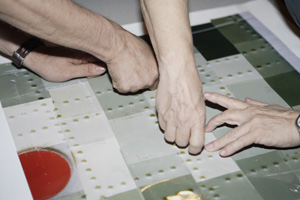
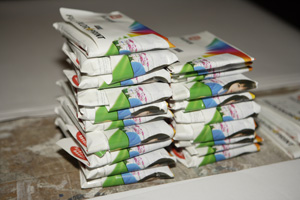
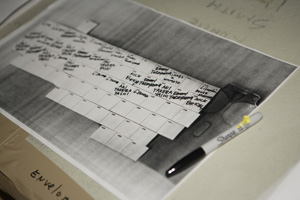
© Katsushige Nakahashi
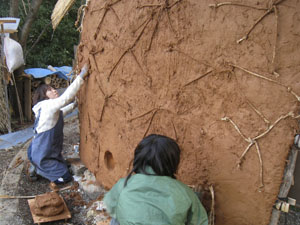
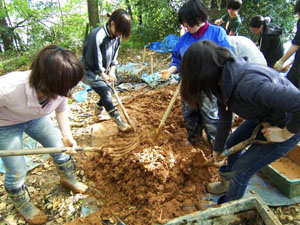
© Akihiko Inoue
Top of this page
- Biomusic: Water/Forest/Life/Sound—A Project Based on Fieldwork in the Lake Biwa Canal, the Garden of Heian Jingu Shrine, and the Kosei-no-Mori Forest
- David Dunn
- This project explores life systems and communication therewith through the collection of sound from sites that have maintained the ecosystem of Lake Biwa over the last 120 years, such as the garden of Heian Jingu Shrine, the Lake Biwa Canal, and Kosei-no-Mori Forest—or the forest located to the west of Lake Biwa—and its bark beetles. A workshop for microphone construction and fieldwork is also scheduled to be held.
- Related entries in the official weblog:
- http://report-on-tip.blogspot.com/search/label/デヴィッド・ダン
- http://report-on-tip.blogspot.com/search/label/岡崎チャンネル
- in Japanese only
- Related link:
- David Dunn’s website
- http://www.davidddunn.com/~david/
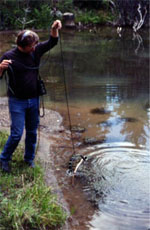
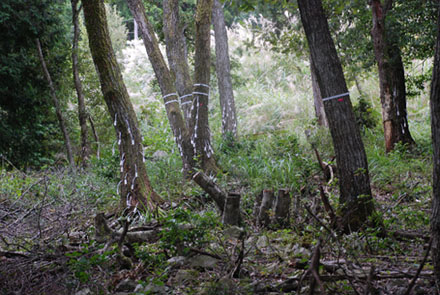
© David Dunn
Top of this page
- Bee’s
- Susana Soares
- In the “Bee’s” project, the odor perception of bees is used as a diagnostic tool for human health. Bees have a phenomenal olfactory sense and can be trained to detect specific odors, such as those of illnesses such as lung cancer, skin cancer, or diabetes (according to Susana Soares). Through the use of bees in place of the usual instruments of medical science, this project also suggests a new way for humans and animals to coexist.
- Related link:
- susana soares :: scientific designer
- http://susana-soares.blogspot.com/
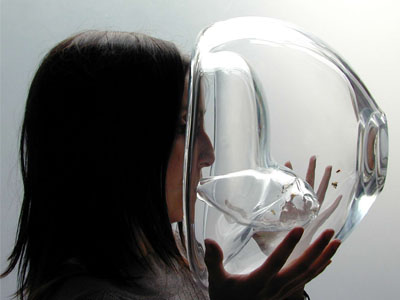
© Susana Soares
Top of this page
| [Documentation only] | Genetic Modification Theater | Critical Art Ensemble |
|---|---|---|
| The Critical Art Ensemble provides us with an alternative form of resistance called ‘contestational biology.’ A seven-point plan: 1) Demystify transgenic production and products. 2) Neutralize public fear. 3) Promote critical thinking. 4) Undermine and attack Edenic utopian rhetoric. 5) Open the halls of science. 6) Dissolve cultural boundaries of specialization. 7) Build respect for amateurism.
Molecular Invasion, 2002
http://www.critical-art.net/books/molecular/ 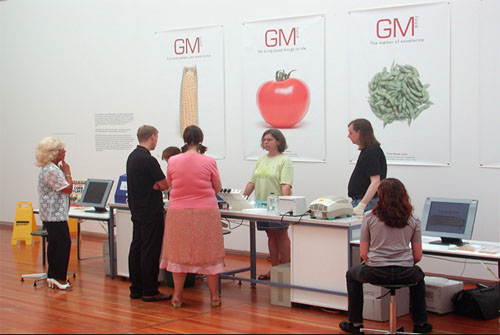 © Critical Art Ensemble | ||
| Related entries in the official weblog: http://report-on-tip.blogspot.com/search/label/Critical Art Ensemble in Japanese only Related links: Critical Art Ensemble’s website http://www.critical-art.net/ | ||
Top of this page
| [Documentation only] | Democracies | Artur Żmijewski |
|---|---|---|
Artur Żmijewski has created photographs and video works that focus on the minority and subvert our fixed thinking. Democracies documents the meetings held by people in public spaces in various locations and the statements they make therein, questioning the meaning of democracy through the portrayal of people with completely different opinions and backgrounds.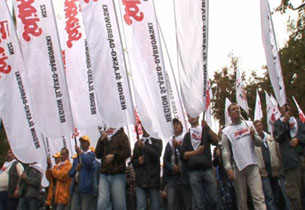 © Artur Żmijewski | ||
Top of this page
- Light/Sound/Brain
- Project representative: Koichi Mori
- This project consists of scientific research aiming to explore the emotional response to the experience of color and of sound from the angles of neuroscience and media art through demonstration experiments. Subjects are placed in a special environment filled with light and sound, and the blood flow in their frontal lobes is measured using the fNIRS (functional near-infrared spectroscopy) method. An artistic experience in the form of a biofeedback system in which the measurements are analyzed instantaneously, adjusting the colors and sounds in the environment in accordance with changes detected in the blood flow. The data collected through this experience will also provide a point of reference for further insight into the relationships between emotions and feelings, emotions and the body, emotions and memory, etc.
- Related entries in the official weblog:
- http://report-on-tip.blogspot.com/search/label/インタラクティブシネマ
- in Japanese only
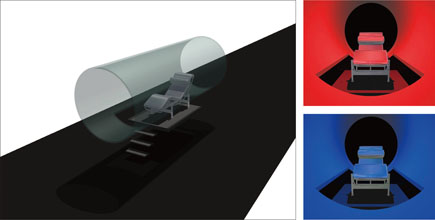
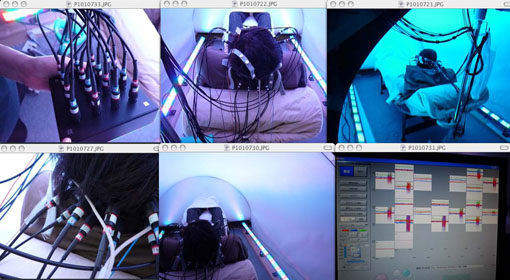
© Koichi Mori
Top of this page
| [Documentation only] | Research on Perceived Self-Orientation as a Relational Concept | Project representative: Kodai Nakahara |
|---|---|---|
A prototype of equipment that functions as a ‘security blanket’ in a terrestrial environment will be produced through the verification and contemplation of the hug machine developed by Temple Grandin, the concepts of the ‘adjacent world’ or the ‘security blanket’ (astronaut Chiaki Mukai), the research on ‘Linus’s blanket’ in microgravity environments (AAS: Artistic Approaches to Space), etc.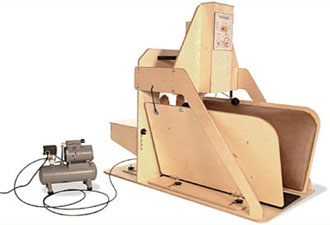 © Temple Grandin 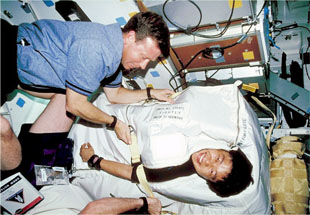 © Chiaki Mukai | ||
| Related entries in the official weblog: http://report-on-tip.blogspot.com/search/label/テンプル・グランディン in Japanese only Related links: AAS 2001–2003: 微小重力環境の「ライナスの毛布」 —Security Blanket— http://iss.jaxa.jp/utiliz/spaceculture/report/aas/AAS2001-2003/linus/linus_index.html AAS 2001–2003: 向井千秋 宇宙飛行士インタビュー http://iss.jaxa.jp/utiliz/spaceculture/report/aas/AAS2001-2003/interview/houston_mukai_10.html in Japanese only | ||
Top of this page
- The Blind Climber/Linus’s Walk
- Project representatives: Tomoaki Ishihara + Kodai Nakahara
- The Blind Climber
- Groping one’s way up a steep mountain. Moving from one hold to another, setting one’s body weight against gravity to draw a single line. Night and day, up and down, over and over again. The creation of a place where the blind body can take shape.
- Linus’s Walk
- This project consists of the creation of a prototype of an instrument that shares the function of Linus’s blanket (discussed in the Research on Perceived Self-Orientation as a Relational Concept) but in a polyhedral form that encourages various body movements—such as climbing, crawling, and lying down—as well as the assessment of the complex, constantly changing relationship between the floor and the body.
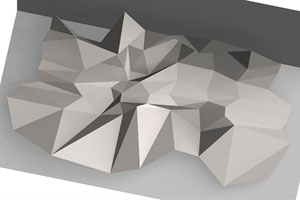
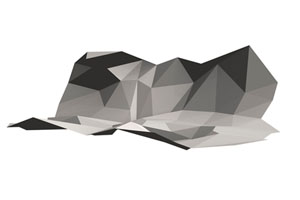
© Tomoaki Ishihara/Kodai Nakahara
Top of this page
- Trans-Acting: Double-Axel Rotating Stage/Walking Afloat—A Topological Experiment on Time Space and Memory Formation Based on Studies of Space Travel, Dementia, Gardens, and Developmental Disorders
- Project representatives: Satoru Takahashi + Shiro Matsui
- A round stage (8m in diameter) rotating on two axels and tilting at a two-degree angle confuses one’s sense of the direction of gravitational force and of body axes, creating the unpredictable and subtle sense of being ‘no(w)here,’ or the sense of being ‘here now’ and ‘nowhere’ at the same time. The changes in one’s brain activity corresponding with the structure of experience/recognition—that is to say, the unification of these various senses, the transformation of the self, spatial self-orientation, corporal schema, etc.—are measured using optical topography. Also, workshops related to space travel, dementia, gardens, and developmental disorders will be held to renew participants’ systems of perception, interpreting the process through which these elements ‘unsettle relations’ as the very basis of creation and pursuing the possibilities that this interpretation presents.
- Related entries in the official weblog:
- http://report-on-tip.blogspot.com/search/label/回転板
- in Japanese only
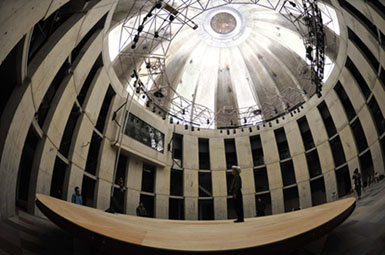
Top of this page
| [Documentation only] | Space Garden | Project representatives: Shiro Matsui + Yukihiro Morimoto + Akihiko Inoue |
|---|---|---|
From ancient times, mankind has continued to create gardens unique to the specific cultural backgrounds and natural conditions of any given time or place. Compared to these gardens created with an outlook on nature where gravity is a self-evident given, what form would a garden in a microgravity environment take? In this project, plants are grown in the International Space Station—i.e., the space environment—to build a living relationship between humans and gardens, reframing the terrestrial outlook on nature and the cultural activity of gardening from a new perspective based in outer space.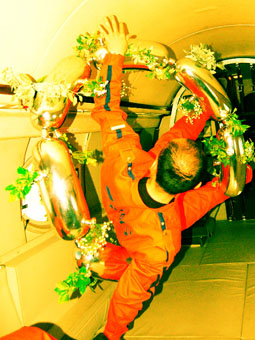 © Shiro Matsui/Yukihiro Morimoto/Akihiko Inoue | ||
| Related links: AAS 2001–2003: 宇宙庭 Space Garden in Japanese only | ||
Top of this page
- THR_33 (Tea House for Robots)
- rootoftwo (John Marshall & Cezanne Charles)
- PLY Architecture (Karl Daubmann & Craig Borum)
- With help from Osman Khan, Chris Johnson, Westley Burger and Robert Yuen.
- *University of Michigan
- Typical mid-century American kitchen appliances such as toasters, mixers, and radios are transformed into robots. The wall senses the facial expression of viewers and modifies its behavior according to their ‘smile degree.’ This acrobatic and comical tea house stands in direct contrast with the meditative space with which we are familiar here in Japan. THR_33 proposes that as our appliances become smart we will change the way we live and come to think of them, and questions how we will relate to these autonomous and responsive environments and appliances.
- Related links:
- PLY Architecture
- designed objects (John Marshall’s weblog)
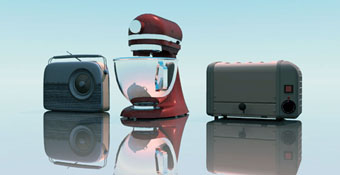
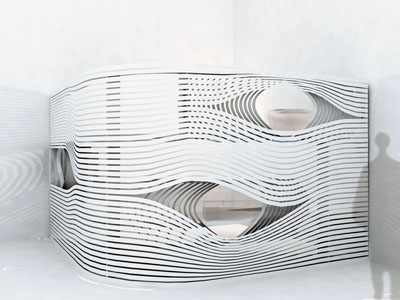
© University of Michigan
Top of this page


